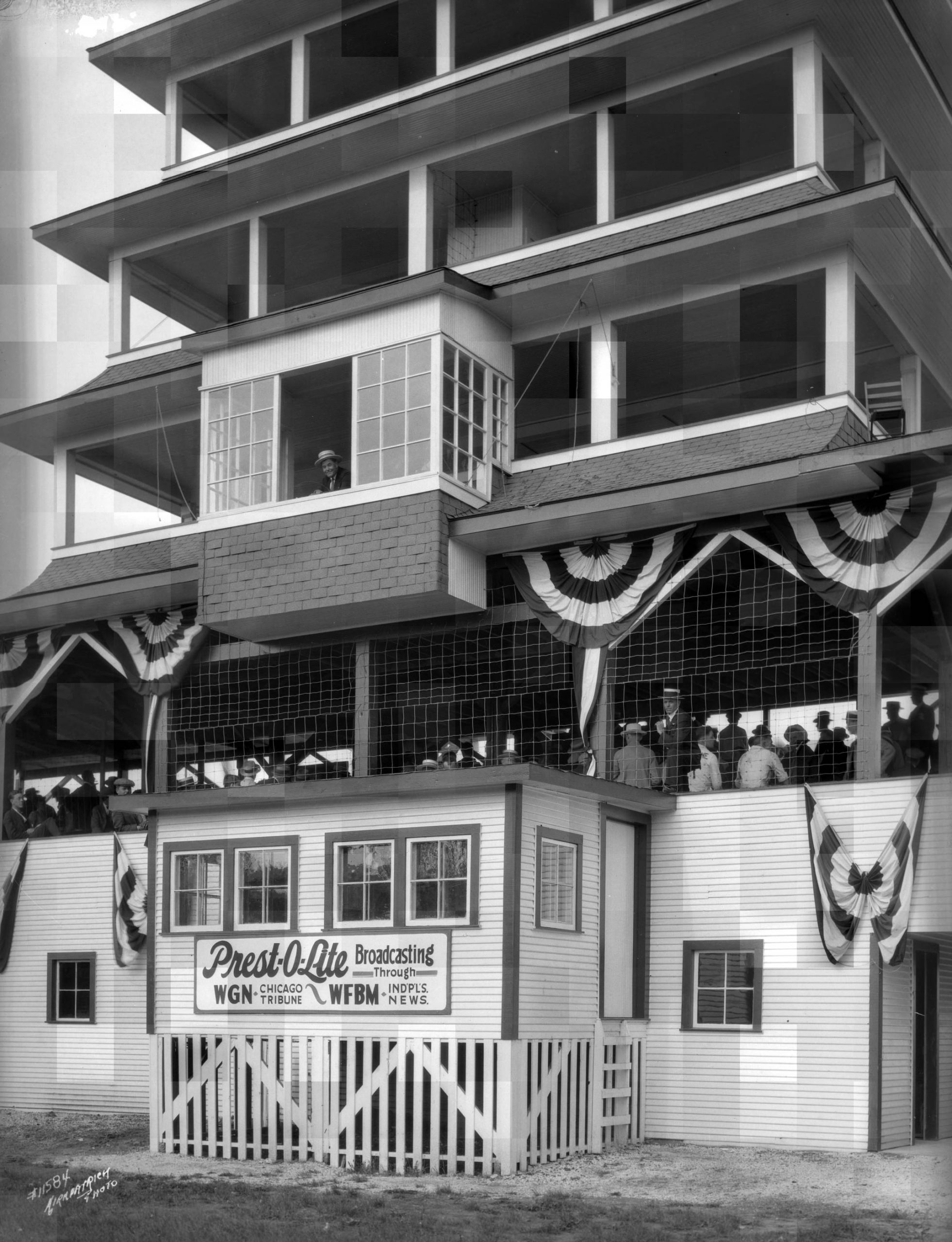The famed Radio Network made its debut in 1952, but broadcasting from the track dates to the early 1920s when radio was in its infancy. At a time when only a handful of people in the Indianapolis area even owned a receiver, individuals who made early efforts to broadcast the race generally were little more than what would later be described as ham radio operators. The first significant broadcast took place in 1924 when a Chicago station using the call letters WDAP was on hand. This broadcast occurred just a matter of days before WDAP transformed into the Chicago Tribune’s eventual broadcasting giant, WGN.
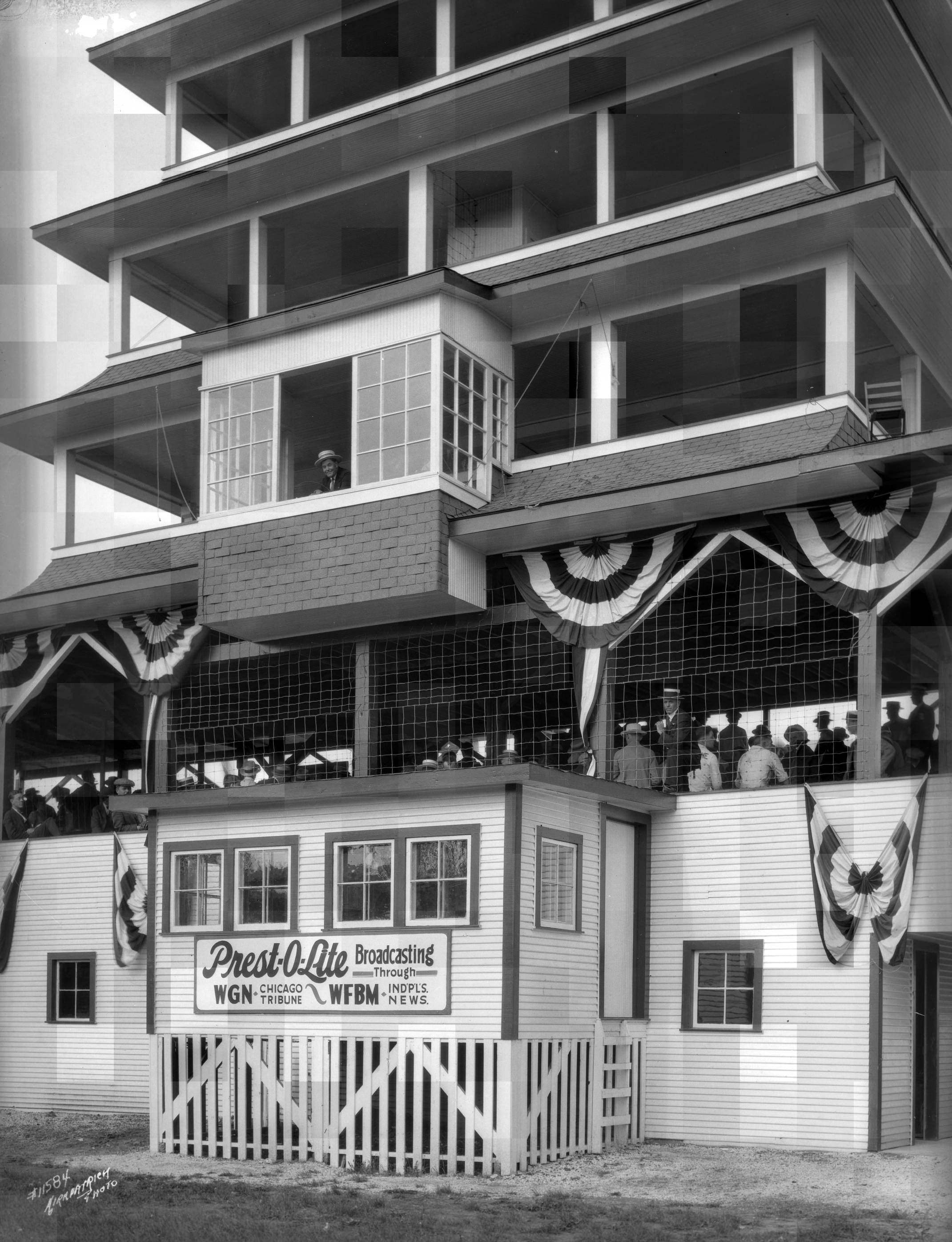
WGN returned in 1925, and an Indianapolis station that had begun broadcasting just six months earlier from the top floor of the joined. Using the call letters WFBM, it remained an Indianapolis radio mainstay for decades to come, while its television arm was the first in the city, debuting at the track on race day, May 30, 1949. This station was Channel 6, the direct forerunner of what some 70 years later continues as .
In 1928, NBC decided to cover the 500 and sent its lead announcer, the already-legendary Graham McNamee. He returned for another decade and, on into the 1930s, another famed broadcaster, Ted Husing, was on hand annually for CBS.
By 1937, the Mutual Radio Network also covered the race. Unlike other networks, Mutual did not have its own studios. It instead covered an event in the region of one of its stations and then, using almost exclusively the local staff, made the broadcast available to all of the other affiliates. Because Mutual did not have an Indianapolis station until after World War II, the famed WLW, over in Cincinnati, Ohio, handled the 1930s broadcasts.
By the time the 500 resumed in 1946, the fledgling in Indianapolis had come under the Mutual banner, and it subsequently assumed the responsibility of producing the entire broadcast. WIBC not only set up all of the engineering but also supplied all but one of the handful of voices heard. The single exception was Bill Slater, Mutual’s anchor, who would arrive from New York a couple of days before the race.
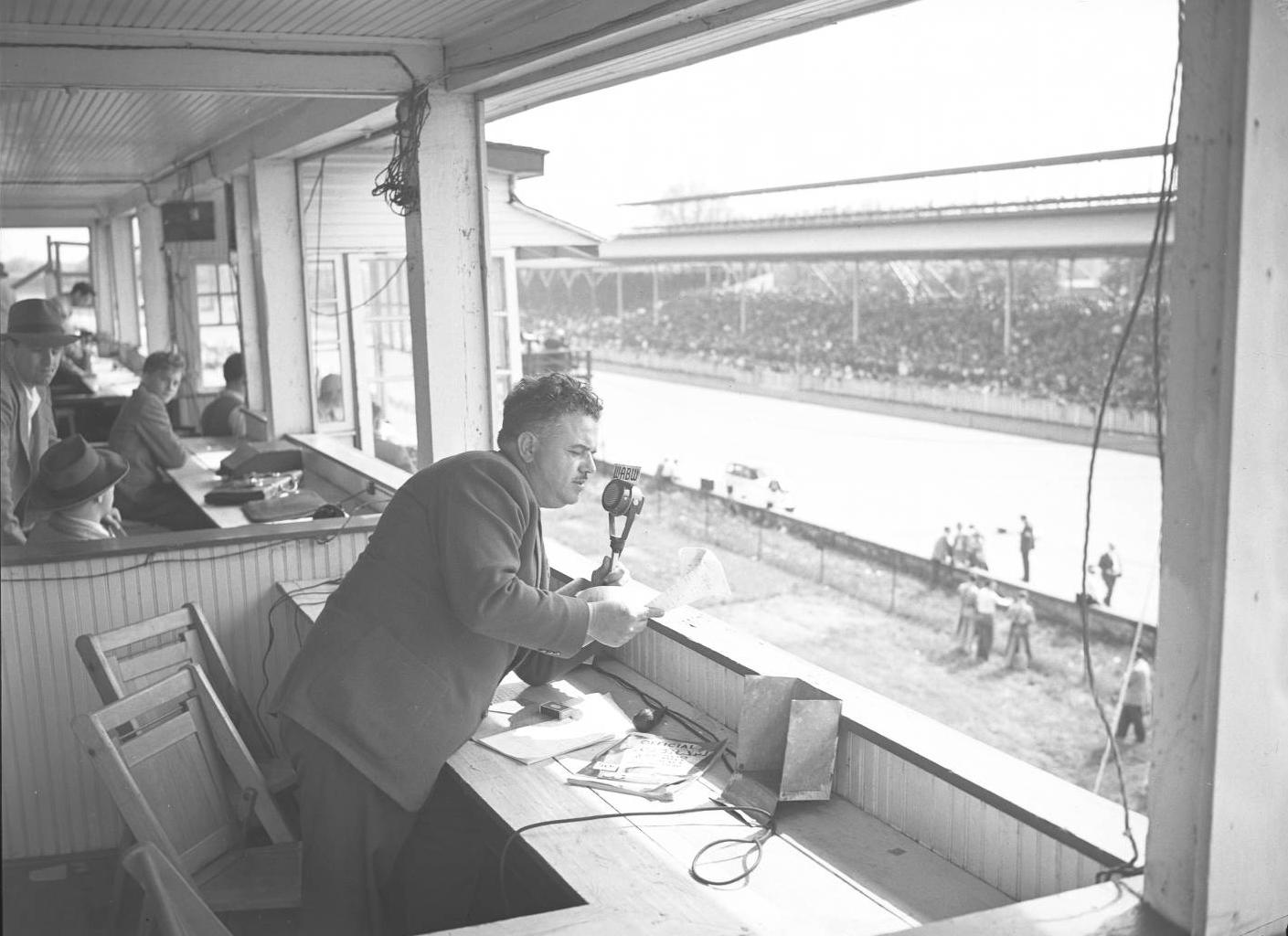
In 1950, when it was understood Slater was ill and might not make the trip, WIBC placed on standby an enthusiastic 26-year-old on its staff named . When Slater showed up at the last minute and sized up the situation, he thoughtfully invited young Sid to co-anchor with him.
The following year, it appeared as if there might not be a broadcast at all. Mutual hiked its advertising rates by a substantial amount, and there were no takers. At the very last minute, an arrangement was made whereby WIBC would broadcast the race regardless. Collins anchored and WIBC provided live coverage at the start, finish, and periodically throughout the race to 25 other Mutual stations.
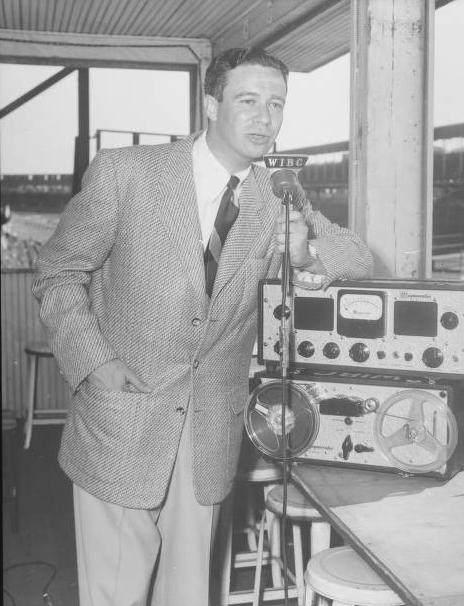
In 1951, there were four other radio stations in Indianapolis (WFBM, , , and ) and, during the next few months, each of them began exploring the possibility of creating a network of some kind, unaware that WIBC’s sales manager, Gil Berry, was already well ahead of them.
Early in May 1952, track owner and President and General Manager made the surprise announcement that they had formed the Indianapolis Motor Speedway (IMS) Radio Network in collaboration with WIBC. Berry managed the new network. WIBC engineers and announcers staffed it exclusively, and Collins served as anchor.
While long reported that the 1952 race was the first to be broadcast in its entirety, with no break at all except for commercials, it was not until the following year that the first “flag-to-flag” marathon took place. The 1952 format was just as it had been for decades. Race coverage began approximately 15 minutes before and continued 15 minutes after the start. As had its forebearers, the new network broadcast another 30 minutes or so either side of the checkered flag, with occasional “updates” filed throughout the middle portion of the race during breaks from “regular” programming.
Concerned by the fact that WIBC’s rivals had expressed displeasure over what had occurred, Hulman and Shaw decided to appease them by gathering everybody together. The result of several meetings was a reorganization and expansion of the IMS Network for 1953 that resulted in inclusion of all the other stations, plus an ambitious plan to broadcast the race in its entirety.
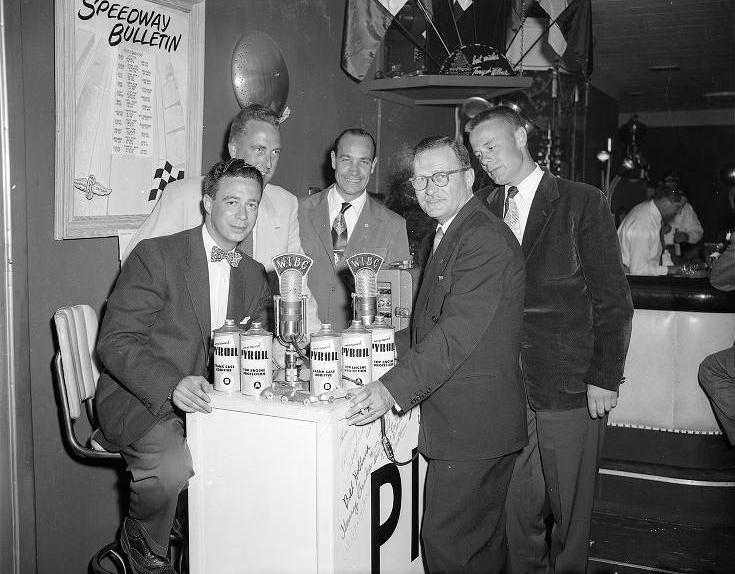
While Berry still ran the day-to-day operations and WIBC continued to be responsible for all of the engineering and production, the network devised an arrangement for the “talent pool” believed to be a radio “first.” No matter which of the five local stations chosen for listening on race day, members of the audience heard reports filed by at least one “voice” from each of the station’s four competitors. The general impact of the 1953 broadcast was phenomenal.
When canvassed for their input after the 1953 race, many station program directors requested some sort of a standard “out cue” so that a station’s “board” operator could be alerted that a commercial break was forthcoming. Alice Greene, a copywriter on the WIBC sales team who was barely into her 20s, made the inspired suggestion for this signal that Sid Collins delivered throughout the 1954 race and thereafter. It was, of course, “Stay tuned for the Greatest Spectacle in Racing.”
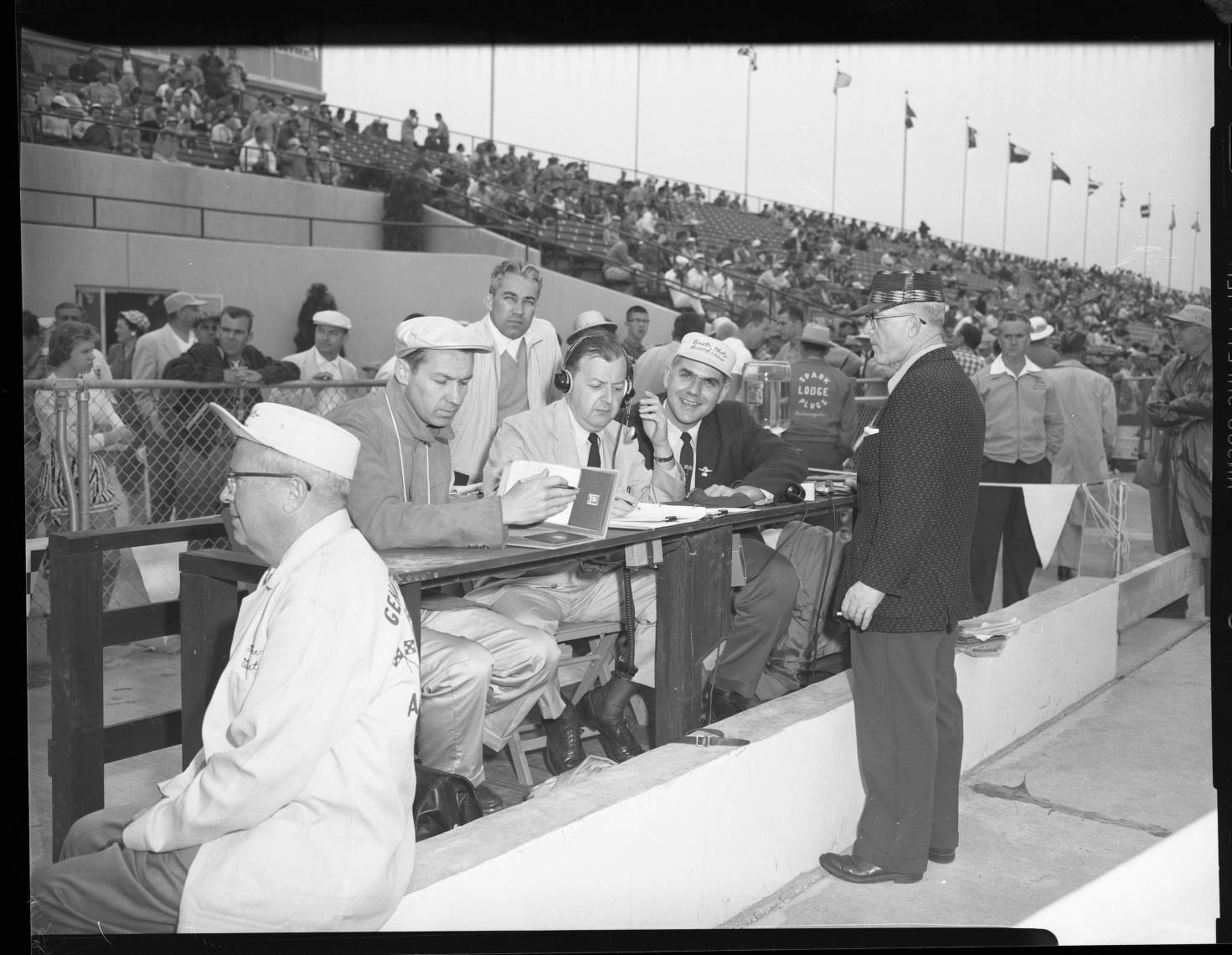
In 1954, the IMS Radio Network added a quartet of half-hour qualifying wrap-up shows, and the station count just kept going up. By the early 1970s, it was believed to include well over 1,000 stations. It, however, was no longer possible to determine the precise number of stations that joined because of a variety of factors, including overseas distribution and a number of stations that waited until race morning to attempt to come on board.
During the first few years of the flag-to-flag broadcasts, the very nature of the event was completely different from what it was to become, and so too were the broadcasts that Collins anchored. Race-lap speeds in the early-1950s were typically in the mid-and low-130 mph bracket and required well over a minute to complete. Caution periods were generally very few and far between and so were the pit stops. For example, in 1951, a year before the network was established, winner Lee Wallard came in only once for fuel and tires during the entire race, and that single stop lasted for one-and-a-quarter minutes. The race, therefore, would settle down into a grinding “enduro.” Leading positions often remained unchanged for lengthy periods of time until somebody dropped out, and everybody behind moved up one position.
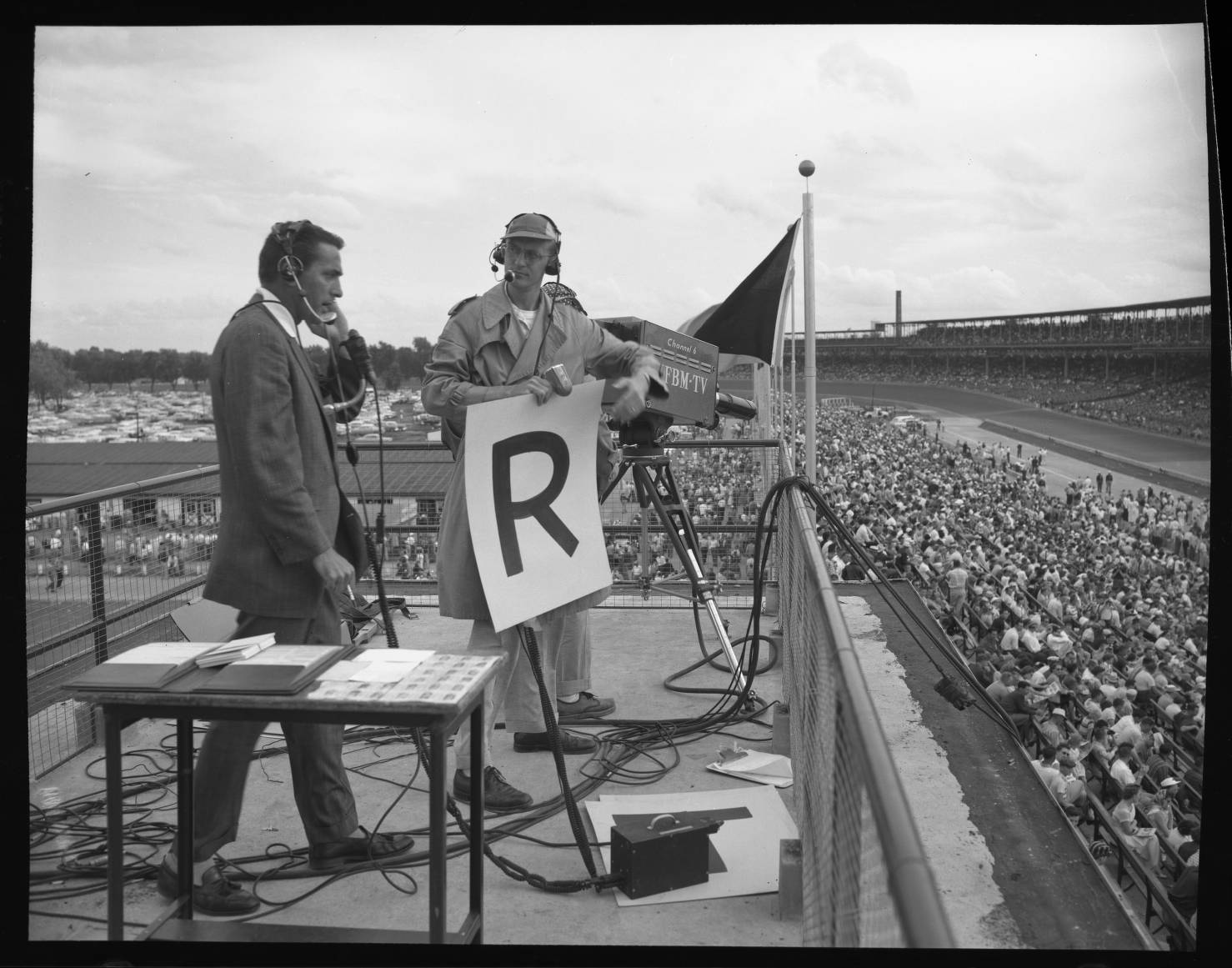
Under these circumstances, Collins hosted a virtual “open house,” while the sounds of the cars could be heard roaring past in the background. He interviewed a parade of booth guests and even read telegrams, while occasionally breaking away to address the latest 10-lap rundown and call in the other “voices” for pit-stop reports and observations from the turns.
This all began to change in the late 1960s and into the 1970s as the speeds picked up dramatically. Pit stops occurred more frequently and were executed in less time, and the changes in the standings seemed to be never-ending. It became necessary for Collins to deviate from the “open house” approach so beloved by the legions of fans in the 1950s.

Following the untimely death of Sid Collins just before the track opened for practice in 1977, Paul Page succeeded as anchor. Page assumed the duties for a decade until he moved to ABC television. By the time Page became the anchor, the pace had become considerably more frantic. The entire broadcast since that time has transformed into a nearly constant “play-by-play” exercise, with booth guests very few and far between. The subsequent anchors have been Lou Palmer, 1988-1989; Bob Jenkins, 1990-1998; Mike King, 1999-2013; Paul Page for a second stint, 2014-2015; and most recently Mark Jaynes, who took over in 2016.
In spite of so many more alternatives for obtaining information, millions of people around the world still choose to follow the race by radio. A surprisingly large number attend the race and listen to the broadcast while seated in the grandstands. In 2020, broadcasts of the 500, which was postponed to August 23, 2020, from its traditional Memorial Day weekend date because of the COVID-19, were critical as no spectators sat in the Indianapolis Motor Speedway grandstands to witness the event first hand.

In spite of so many more alternatives for obtaining information, millions of people around the world still choose to follow the race by radio. A surprisingly large number attend the race and listen to the broadcast while seated in the grandstands. In 2020, broadcasts of the 500, which was postponed to August 23, 2020, from its traditional Memorial Day weekend date because of the COVID-19, were critical as no spectators sat in the Indianapolis Motor Speedway grandstands to witness the event first hand.

Help improve this entry
Contribute information, offer corrections, suggest images.
You can also recommend new entries related to this topic.
